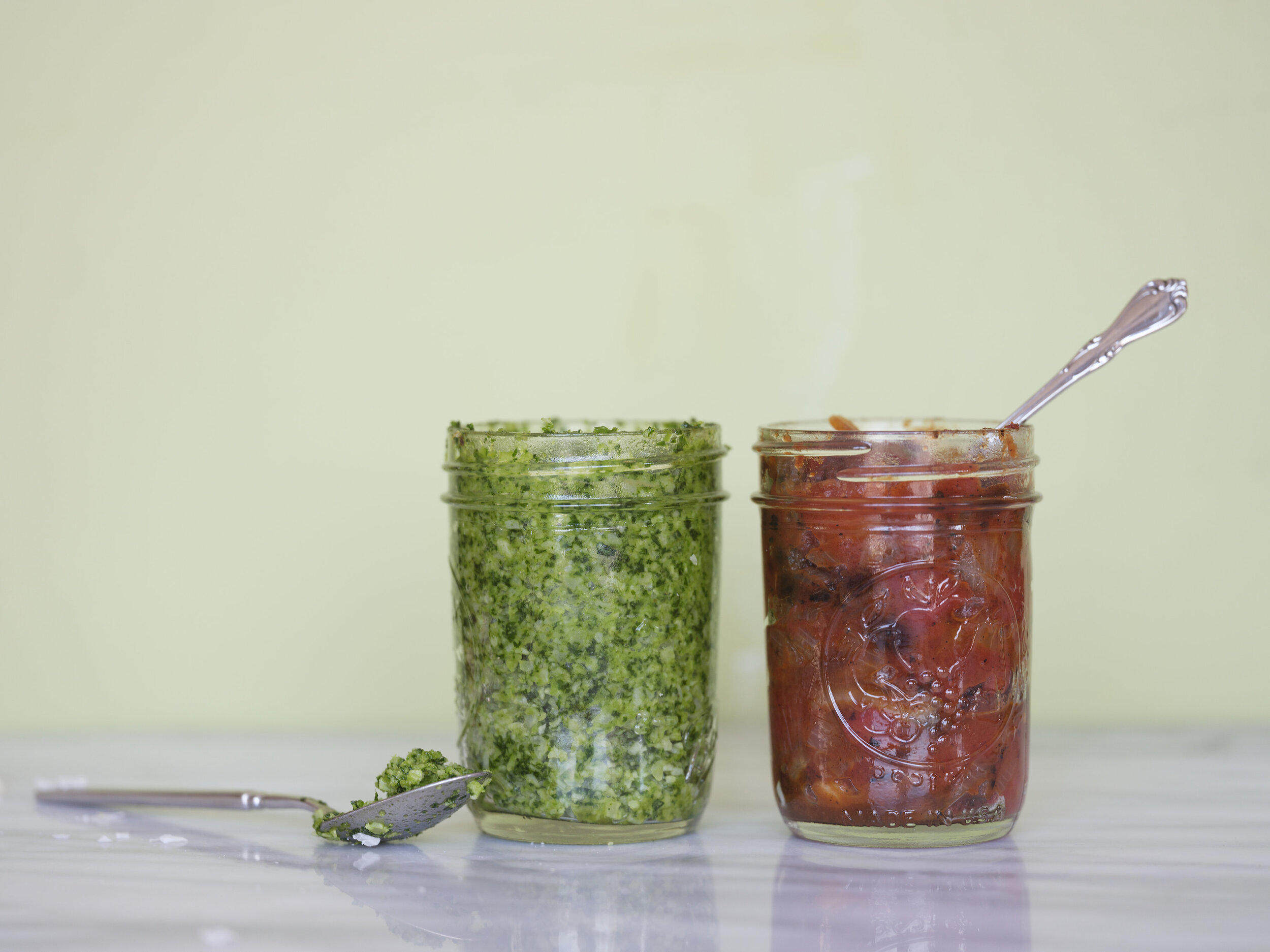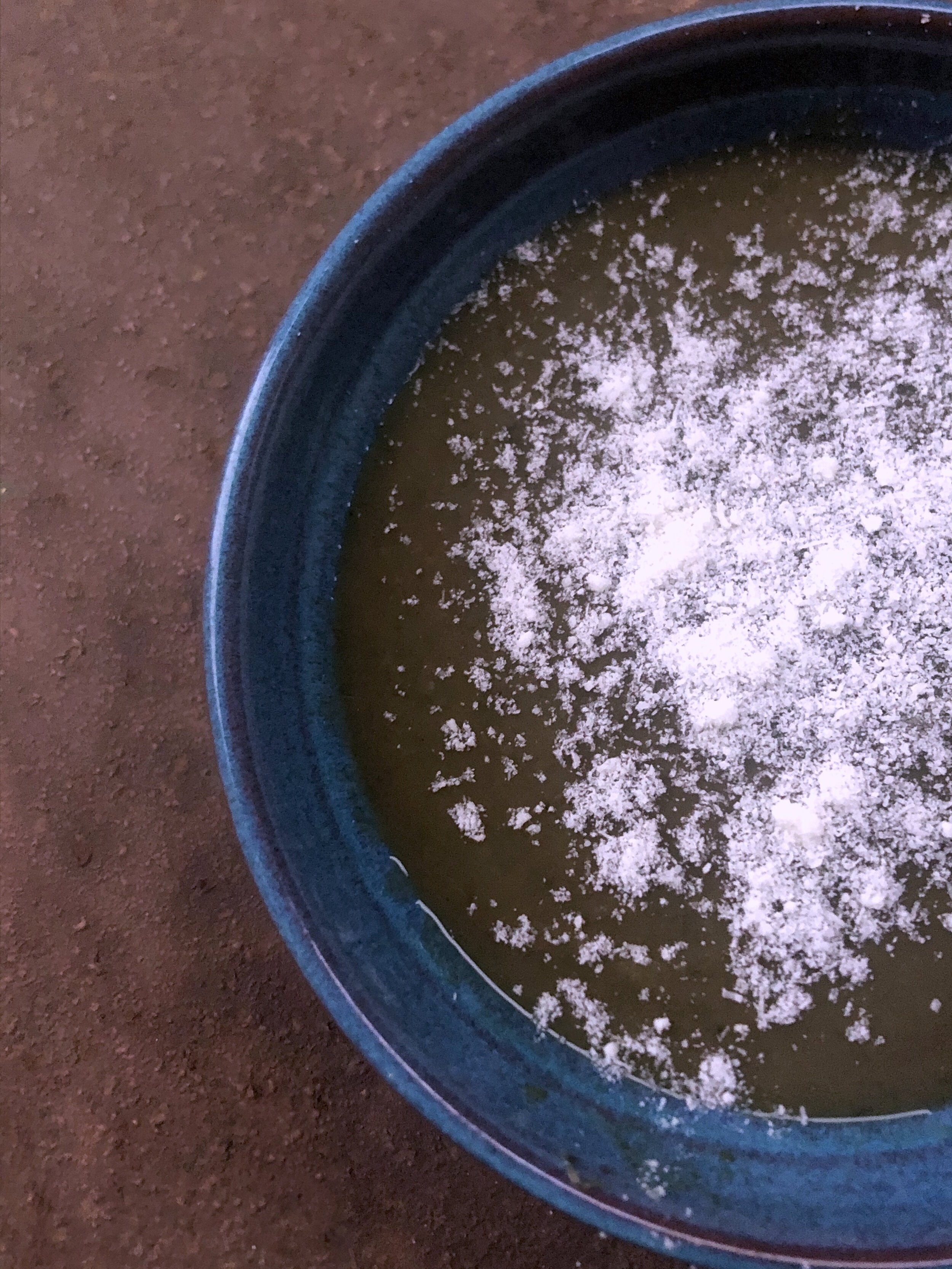Tomato Onion Chutney and Cilantro Coconut Chutney
Carrie H
These chutneys are kind of a pair, a matched set, because they go with the Indian Breakfast bowl recipe from my cookbook Tasting Pennsylvania, which was gifted to me for the cookbook from Cafe Santosha in Trexlertown. If you haven’t been there, and you are local to me in Eastern Pennsylvania, please go.
Cilantro Coconut Chutney and Tomato, Onion, and Golden Raisin Chutney. Photo by Alison Conklin.
They’re delicious on their own, with eggs or anything else you’d want to use a chutney for, quite honestly. As a team, they work great with the breakfast bowl, but if you have leftovers, I don’t think you’ll be hard-pressed to figure out how to use them up—whether that means making the breakfast bowl again, or mixing it with rice or other cooked meats, that’s your decision. All good.
Ingredients for tomato, onion, and golden raisin chutney
3 tablespoons olive oil
2 medium onions, finely diced (about 2 cups)
3/4 teaspoon salt
1/4 teaspoon freshly cracked black pepper
1/3 cup golden raisins
1 1/2 tablespoons brown sugar
1/4 teaspoon ground cardamom
1 to 2 tablespoons red wine or sherry vinegar
1 (15-ounce) can fire-roasted diced tomatoes
1/2 Thai chili pepper or a pinch of chili flakes
Yield: 12 ounces
Instructions
Heat the olive oil in a medium saute pan and cook the onions, stirring occasionally, until they turn golden brown about 5 to 8 minutes. Add the salt and pepper, and stir a few minutes more. Add the raisins, sugar, and cardamom, and stir to combine.
Deglaze the pan with the wine or sherry vinegar and scrape any bits that are sticking to the pan. Add the tomatoes and pepper. Simmer and cook uncovered stirring occasionally, for about 20 minutes.
Refrigerated, the chutney will keep for about 2 weeks. Serve at room temperature.
Ingredients for cilantro coconut chutney
1 small green chile
1 pinch ground cumin
1 tablespoon agave nectar
1 large bunch fresh cilantro, tough ends removed
1 lime, zested and juiced
2 cups unsweetened flaked coconut
Salt and freshly cracked black pepper to taste
1 to 2 tablespoons extra virgin olive oil, as needed
Makes 1 pint.
Instructions
In the bowl of a food processor, pulse together the chile, cumin, agave nectar, cilantro, lime zest and juice, flaked coconut, and salt and pepper. Add the oil while the machine is running. The chutney should be a thick paste, not thin like a pesto. Taste and adjust seasoning as needed. Serve at room temperature. Chutney will keep in the fridge for up to two weeks.



